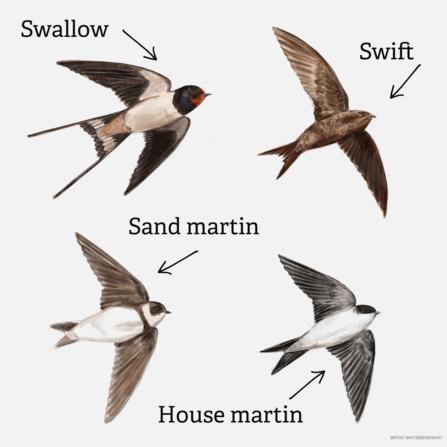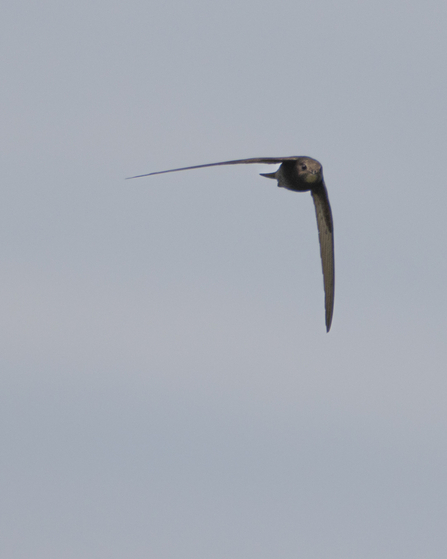Swifts are magical birds for so many reasons. Firstly, they almost never land. They eat, sleep, bathe and even mate all whilst flying. A lot of birds move through the sky but swifts live in it. Their latin name, apus apus, translates as ‘without foot’ as they only ever land when its time to nest and start a family. A young swift might fly continuously for two or even three years, without ever stopping, until they land to have chicks of their own! They travel thousands of miles each year from Africa to breed in the UK, arriving on our shores towards the end of April or early May. I love watching swifts and thinking about how just a few weeks ago, those same birds would have been soaring over the Sahara desert or racing over the Gola Rainforest.
If you are a beginner bird watcher, spotting a swift can be a little tricky as other birds that also migrate to the UK for the summer such as swallows, house martins or sand martins can look similar. So what do you need to look or listen for to identify a swift ? Firstly, the call of the swift is extremely distinctive once you get your ear in. They have a unique, high-pitched, piercing screaming call. Once you have heard the call look out for a dark, sooty brown bird with long, scythe-shaped wings. Swallows, house martins and sand martins all have white on their undersides whereas swifts will look totally black in the sky. Enjoy them while you can because come early August, they begin to leave the UK and undergo their mammoth migration back to Africa.



